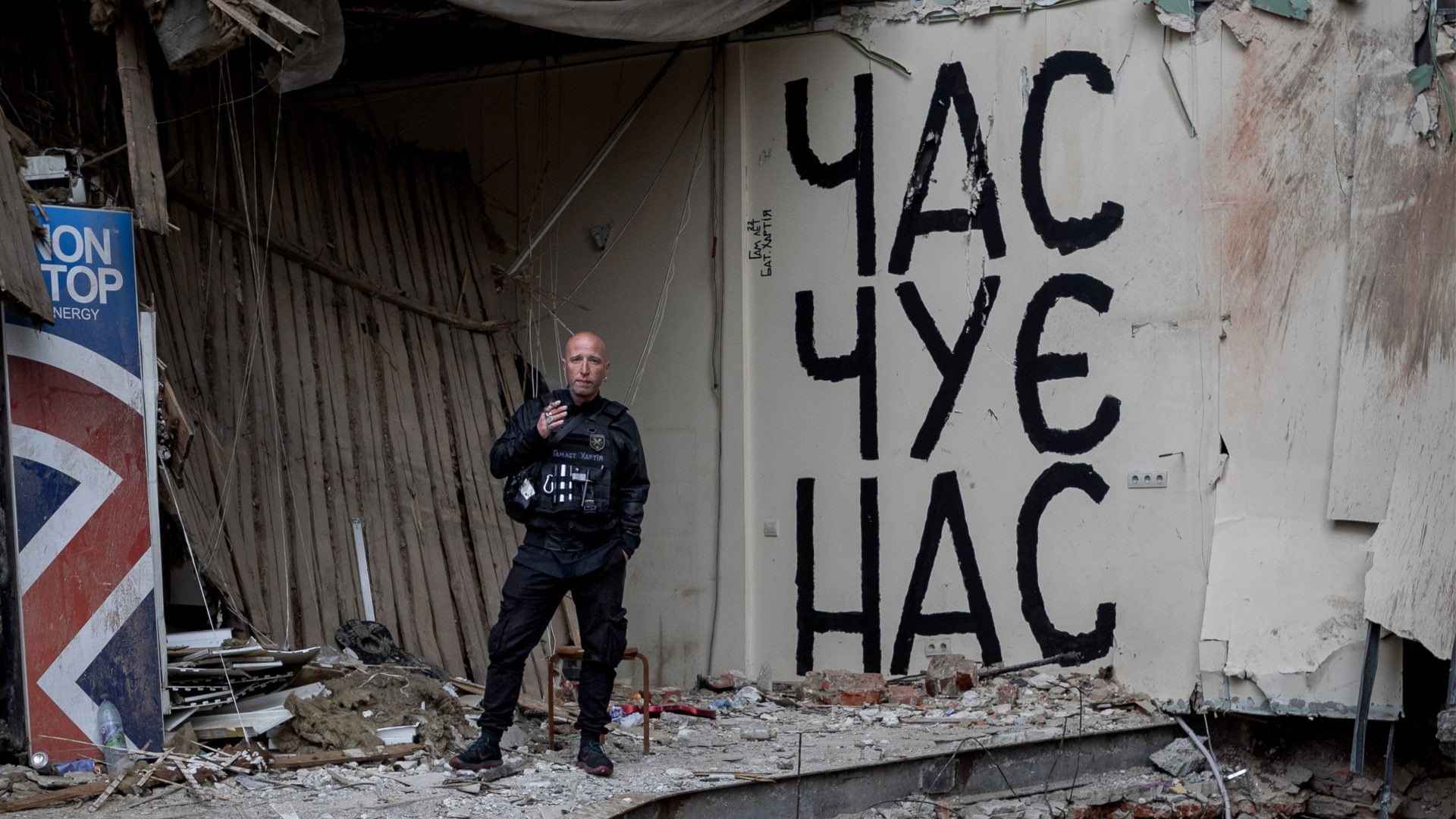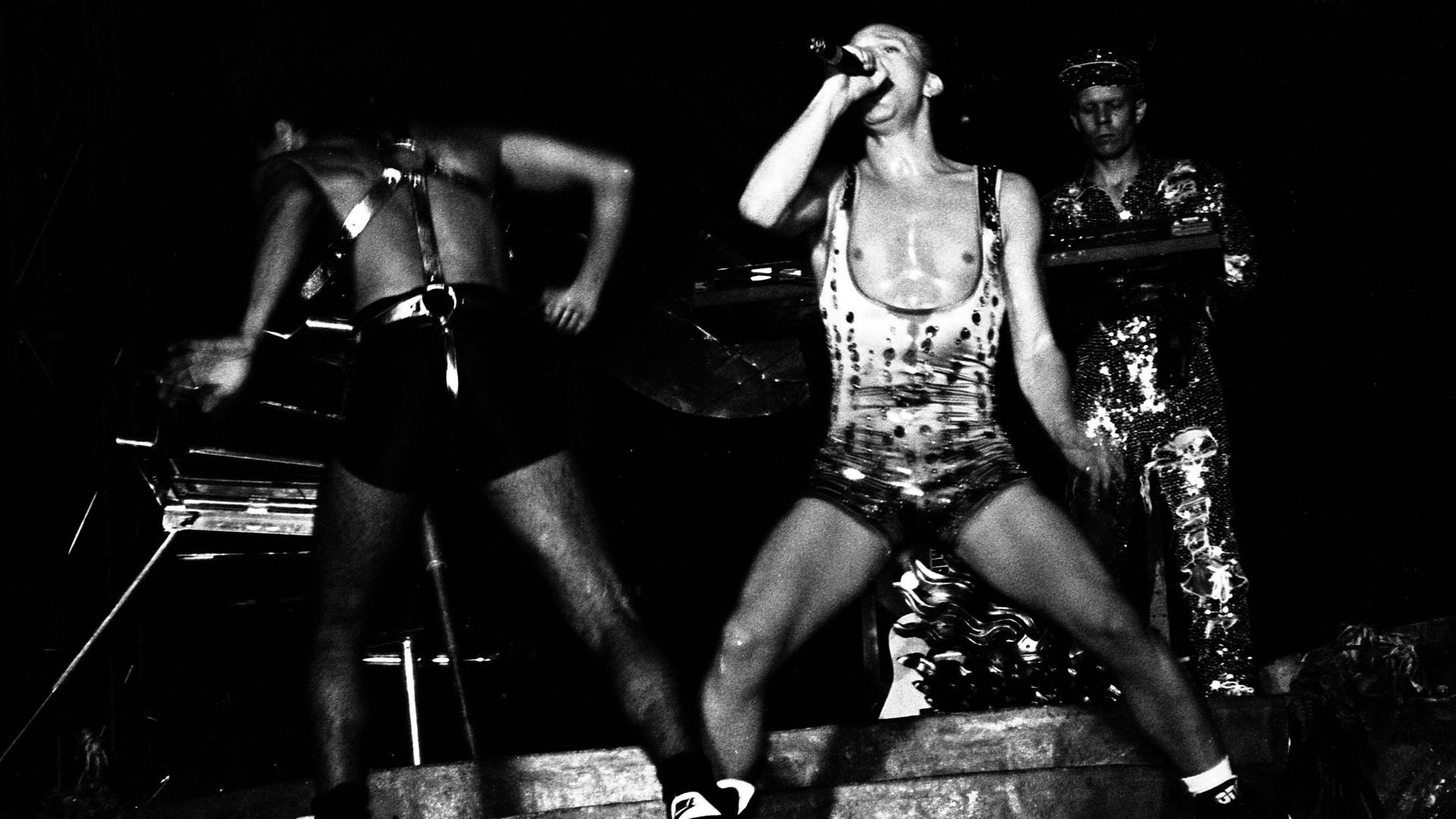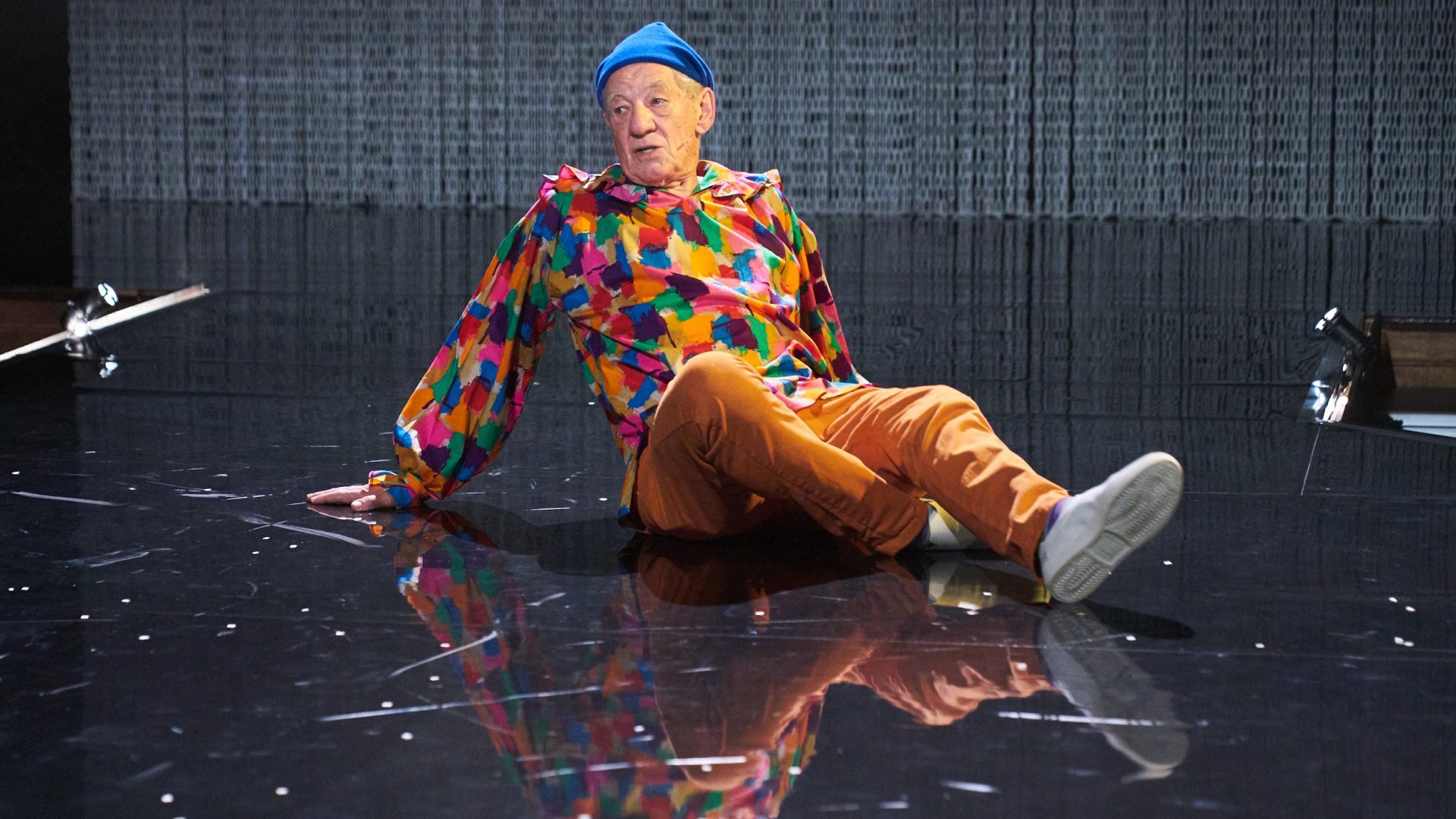Since arriving in Ukraine at the start of the invasion to capture the stories
and experiences of those affected by war – I’m a photojournalist and
artist by trade – I’ve seen despair, destruction and defiance.
One man who sums up the latter operates in the heavily-bombed Kharkiv region, where I’ve just spent a month. Russia has embarked on a new, more organised second offensive targeted at Ukraine’s second city, which makes his work all the more important.
Hamlet Zinkivskyi helps to sustain Kharkiv in these dark hours with street art produced amid the destruction and cruelty of war, offering his own cultural transformation of a city that has been devastated by Vladimir Putin’s bombs.
Lean, shaven-headed and clad in black, Zinkivskyi is an artist who is also a serving soldier from the Hartiya Battalion in Kharkiv.
Renowed locally and with a growing reputation internationally before the invasion, he says he was told by his commander that the best way he could
support the city was by covering it with his art. Now his works can be seen throughout Kharkiv.
Zinkivskyi has the freedom to paint wherever he chooses. He tells me, “Although I could move to a safer part of Ukraine, I’m staying put because
these are my people, Kharkiv is my city and its streets are my canvas.”
At the start of my journeys through Ukraine it was not long before I started seeing examples of his work on buildings across the country. I was intrigued to know more, and after a chance encounter with a passenger during a six-hour train journey east, I learned that to meet the enigmatic street artist/painter, I would have to go to Kharkiv.
After a series of calls, we managed to arrange a meeting. I waited outside a
bombed McDonald’s restaurant on Pushkinska Street, in the north of the
city. The constant rumble of artillery exchange in the distance was unsettling, but it was not long before Zinkivskyi made his appearance. Dressed in black, wearing a bulletproof vest and carrying a revolver, he took me on a private tour of his work around the war-torn streets of the city.
Hamlet’s art is distinguished by its black and white graphic style with the
presence of the author’s text that initiates an invitation for the viewer to see and consider; provoking an unfamiliar perspective that lends itself well to the city’s challenging times.
After the tour, we headed back to Pushkinska Street where he told me
his plans for his next piece.
“Everything must change here; we must finally rid ourselves of all things
Russian,” he said. “We are slowly changing all the old Russian street names; what was once Moscow Avenue has now been renamed ‘Heroes of Ukraine Avenue’. Here in Kharkiv, there is no place for an avenue named after the capital of a totalitarian dictatorship that we have come to know as Russia, our aggressors.”
With a bag of paint and a pair of ladders, we headed back down Pushkinska Street. There was some irony about the location given our mission – formerly known as Nimetska (German) Street, it was later renamed after Russian poet Alexander Pushkin during the Soviet era.
Following a brief chat with his battalion commander, Hamlet reached into his bag of accoutrements while I held the ladder he was about to climb.
The 35-year-old told me once again that “we must ‘de-Russify’ the name of
this street; these imperialistic Russian writers and artists have no place in
this country’s modern history.” Then, in an acknowledgment of appreciation to Great Britain for the support shown since the beginning of the war in Ukraine, he went on to rename Pushkinska Street “Britain Street”.
Hamlet Zinkivskyi’s work is on show at The Ukrainian Way at London’s Saatchi Gallery, September 3-11. Organised by the M17 Contemporary Art Centre, Kyiv and the Tsukanov Family Foundation, a London-based charity, the show will be accompanied by an auction of physical works and NFTs. All proceeds will be donated to charities supporting Ukrainian arts and culture.



